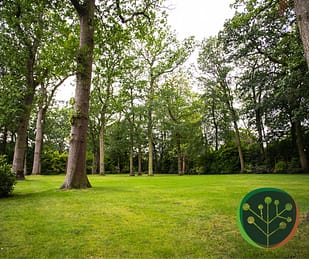A Tree Survey – Which One Do I Need?
The Difference Between A Tree Survey, An Arboricultural Impact Assessment & An Arboricultural Method Statement.
If you are submitting a planning application and there are trees located on or near to the site. There are a number of different tree surveys and assessments that the local planning authority could ask for, depending upon the context. With all of the surveys being given a similar, but not quite the same, name or title, it can be confusing and difficult to understand what the difference between each of them is. Here, we aim to provide some clarity regarding the different options available and what you get for your money in each one. If you’re looking for a tree survey to take place, then read on…
Tree Survey
The tree survey should be conducted to the British Standard 5837 and involves the survey and identification of each tree that is on or near the site. The survey will identify specific data about each tree, including the trees common and botanical name, the size and age of the tree, its overall health, the length of life expectancy, the crown spread and height and the trees Root Protection Area. All of the other reports and assessments will be based upon this initial survey, so it is a vital part of the planning process.
and height and the trees Root Protection Area. All of the other reports and assessments will be based upon this initial survey, so it is a vital part of the planning process.
Arboricultural Impact Assessment
An Arboricultural Impact Assessment will identify which trees will be retained on site and which will be removed. It will also consider the impact that development plans could have on the trees that are to be retained on site, and vice versa. The health and the expected lifespan of the trees will be considered as the level of impact will depend on these factors. For example, if a tree is healthy and has a long lifespan, it will be impacted less severely than a tree that is unhealthy. Upon consideration of these factors, any measures that are needed to mitigate the impact will be recommended.
The Arboricultural Impact Assessment will also consider any alternative factors that may affect the development, such as Tree Preservation Orders (TPO) applied to any of the trees.
Arboricultural Method State ment
ment
The Arboricultural Method Statement is the final stage of the process, with the purpose of specifying how any construction works will be carried out to ensure that the retained trees on site are not damaged.
This could include recommendations of protective fencing, pruning of the trees, machinery movement restrictions, consideration of soil compaction and methodology for the installation of under and above ground services. The method statement will be completed on a site-specific basis and will consider different aspects depending upon the development plans for the site and existing features on site.
These surveys and assessments are reliant upon the results of the others in order to be most effective and it is highly likely that each of these will be required when seeking planning permission for a site with trees present.
ProHort Ltd can provide all three different types of survey, working closely with you to ensure that your development can move ahead smoothly without being halted by the presence of trees. Why not check out our services for more information or follow us on Facebook to keep up to date with our latest news.

 ment
ment